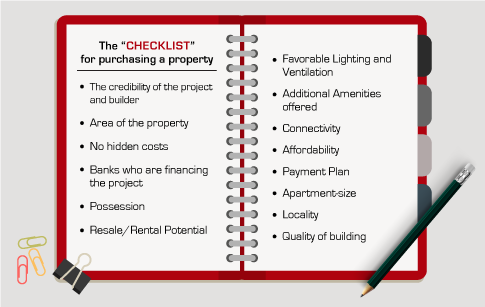The rent to rent property model has emerged as a popular and innovative strategy in the UK property market. It allows individuals and companies to lease properties from landlords and then sublet them to tenants at a profit. This approach enables investors to enter the rental market without owning the property, lowering the barriers of entry typically associated with property investment. As demand for rental homes continues to grow across the UK, rent to rent property offers a practical way to generate steady income while managing risks effectively.
In 2025, the UK property market remains dynamic, with rising property prices and shifting tenant expectations. Rent to rent property is ideally suited to these conditions, especially for those who want to avoid large capital investments or mortgage commitments. Whether you are a beginner eager to break into property rental or an investor looking to diversify, understanding the rent to rent property concept and its practical applications is essential. This guide will cover everything you need to know to get started and succeed.
Understanding How Rent to Rent Property Works
Rent to rent property involves entering a leasing agreement with a landlord, where you rent a property for a fixed period, often at a guaranteed monthly rent. You then sublet this property to tenants at a higher rate, generating a profit from the rental income. Unlike traditional buy-to-let investing, rent to rent property does not require purchasing the asset, which means less upfront capital and a lower financial risk.
There are several rent to rent property models, including guaranteed rent agreements and managing Houses in Multiple Occupation (HMOs). Each type has unique advantages and legal considerations. For example, HMOs can increase rental income by accommodating multiple tenants but require specific licenses and compliance with safety regulations. Understanding the legal framework and terms of rent to rent property agreements is crucial to avoid pitfalls and ensure a sustainable business.
Finding the Right Rent to Rent Property in the UK
Finding the ideal rent to rent property starts with thorough research and using reliable property portals such as Property Pal and Property Pool. These platforms list properties available to rent or buy, helping investors spot promising opportunities. When searching, focus on areas with strong rental demand, good transport links, and amenities that attract tenants. Evaluating the property’s condition is also vital as this influences renovation costs and rental potential.
Commercial property for rent can also be an option within the rent to rent property model. While commercial leases tend to be longer and often more stable, they require a different approach to management compared to residential properties. Using property valuation tools and monitoring local property news can help identify undervalued properties suitable for rent to rent property ventures. By staying informed, you can spot market trends and make smart decisions.
Starting Your Rent to Rent Property Business

Launching a rent to rent property business involves more than signing a lease. Effective financial planning is key, including budgeting for deposits, maintenance, refurbishment, and marketing. A well-presented and maintained property attracts better tenants and reduces void periods. It’s important to market your rent to rent property properly to ensure a high occupancy rate and steady cash flow.
Engaging premier property lawyers early on helps secure robust contracts that protect your interests and clarify responsibilities. Good legal advice reduces risks, especially when dealing with landlords and tenants. Efficient property management is also essential for a successful rent to rent property business. This includes routine maintenance, tenant communication, and compliance with safety regulations. Strong relationships with all parties create a foundation for long-term success.
Maximising Profit and Avoiding Common Pitfalls
To maximise profits from rent to rent property, investors often explore value-adding strategies such as furnishing homes or converting them into multi-let HMOs. These approaches can significantly increase rental income but may require additional licences and management expertise. Another lucrative option is short-term letting or Airbnb, which can boost yields but involves more intensive management and regulatory compliance.
Despite its benefits, rent to rent property carries risks, including rent arrears, property damage, and legal challenges. Staying updated with the latest UK property market news helps anticipate regulatory changes and tenant behaviour shifts. Being proactive and prepared is key to overcoming challenges. By carefully selecting properties, maintaining good communication, and monitoring financial performance, you can build a profitable and sustainable rent to rent property business.
Conclusion
Rent to rent property offers a flexible and accessible way to benefit from the UK rental market without the need to buy property outright. With thorough research, legal safeguards, and effective management, beginners can launch successful rent to rent property ventures in 2025. The strategy is well suited to today’s market environment, where demand for quality rental homes remains high and property prices continue to rise.
For those considering rent to rent property, taking the time to understand the process, identify the right properties, and seek professional advice is essential. When done correctly, rent to rent property can provide a reliable income stream and a stepping stone to greater property investment opportunities in the UK market.
Bullet Speed Summary
- Rent to rent property is leasing a property from a landlord and subletting it for profit without owning it.
- It is growing in popularity in the UK due to rising property prices and demand for rentals.
- Success requires understanding legal terms, lease types, and the difference between residential and commercial rent to rent property.
- Key platforms like Property Pal and Property Pool help find suitable rent to rent property opportunities.
- Budgeting, marketing, and legal support from premier property lawyers are critical when starting.
- Maximising profit often involves HMOs, furnishing, or short-term lets, balanced with careful risk management.
- Staying updated with UK property market news and trends is vital for sustained success.
- Rent to rent property provides a lower-risk, accessible entry to the rental market for beginners and investors.
You may also read: How the Property Redress Scheme Works for Consumers and Agents




